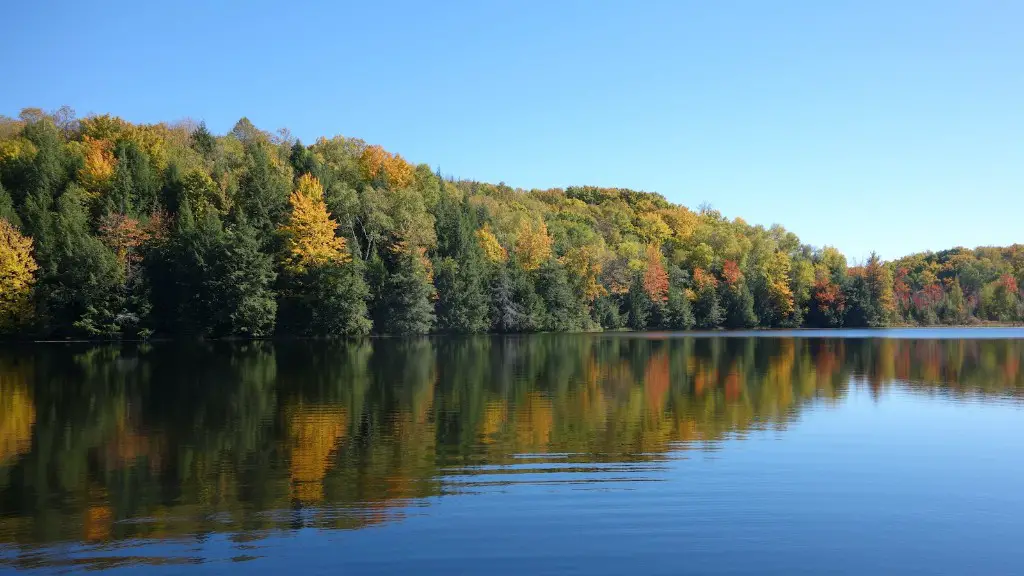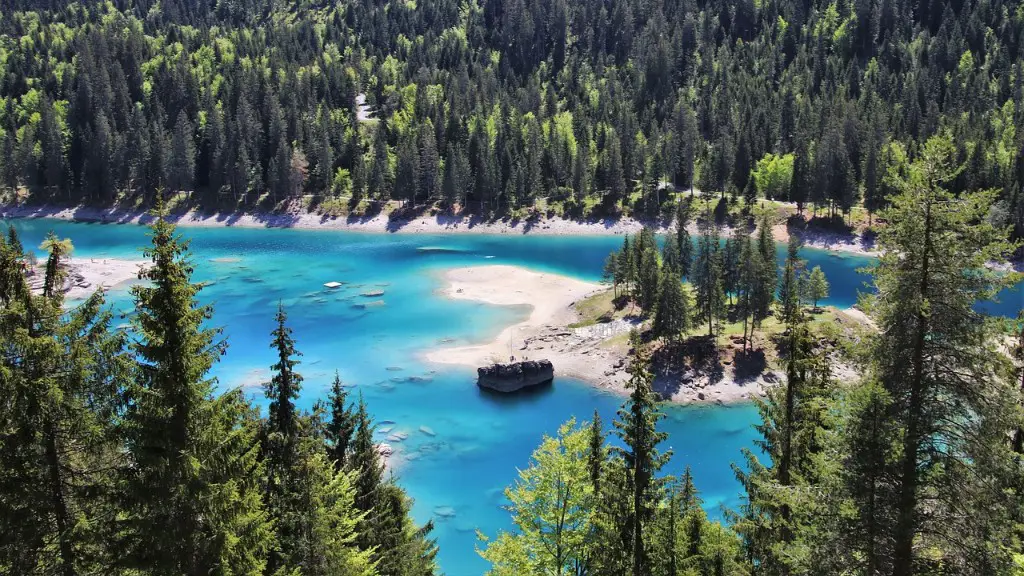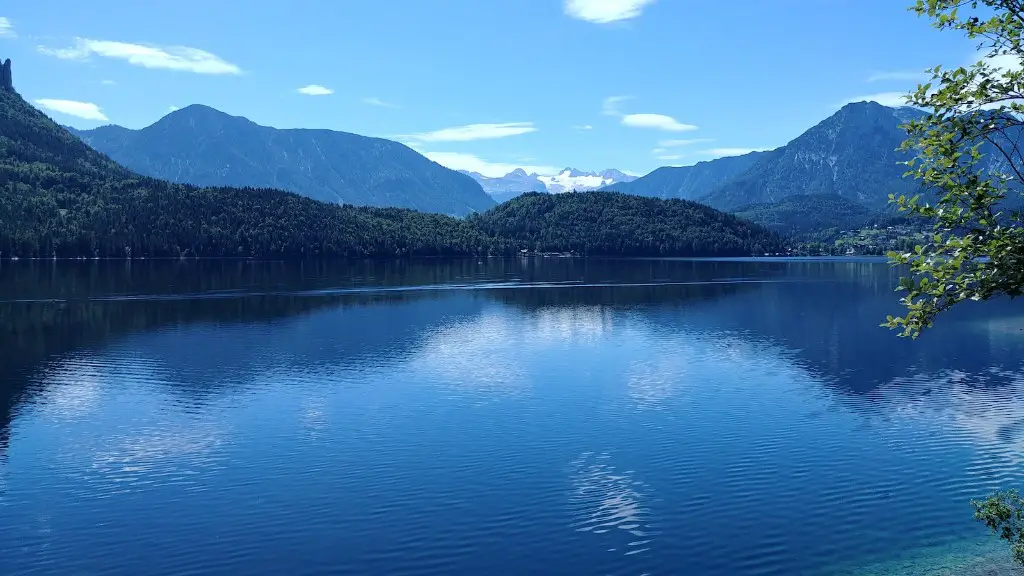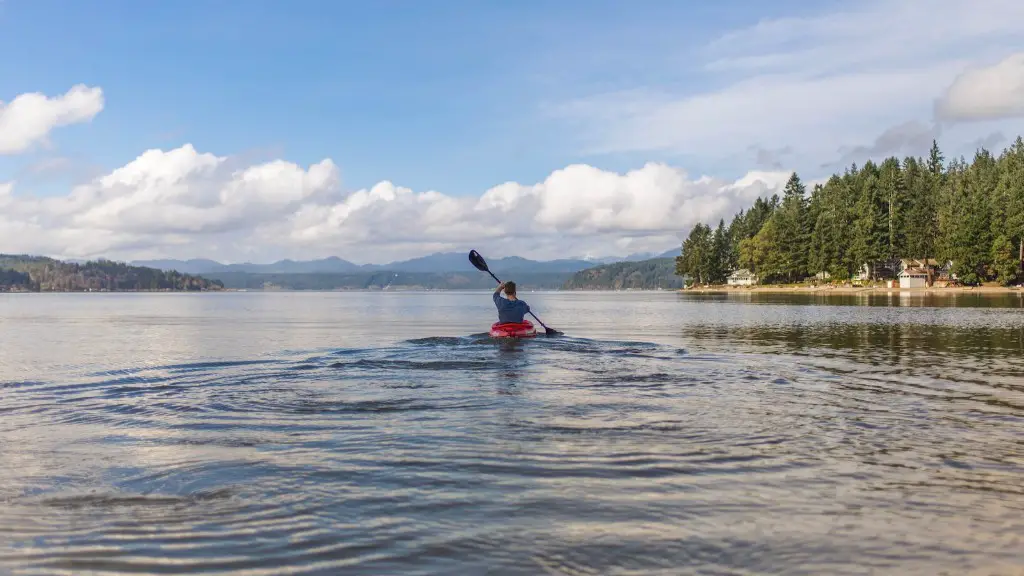The unrivaled beauty of Lake Huron has made it one of the most popular Great Lakes in North America. However, from a closer look, this alluring body of water is suffering from the impacts of pollution and other threats. Since the lake’s ecosystems are delicate and sensitive to changes in the environment, it is important to understand why and how pollution is occurring in and around Lake Huron.
Among the various forms of water pollution and environmental damage, the most pressing issue for Lake Huron is algal blooms, which are caused by the introduction of excessive amounts of phosphorous and nitrogen into the lake’s water. These compounds are usually the product of runoff from agricultural land, particularly in and around large livestock farms, as well as sewage runoff from urban and suburban developments. Sewage treatment plants in the area also release these compounds into the lake, further contributing to the algal bloom problem. In recent years, algal blooms have become more frequent, causing lake water discoloration, foul odors, and even fish kills. In addition, the presence of algal blooms in the lake can also cause the water to be unfit for human consumption in certain parts of the lake, hindering locals from using it as a source of drinking water.
The impacts of algal blooms are indicative of more severe water pollution occurring in and around Lake Huron. Along with algal blooms, other forms of water pollution such as industrial waste and pesticide runoff are also being discharged into the lake. Industrial waste, which is often found in large quantities near manufacturing plants, can contain hazardous substances such as metals and toxins that can have a detrimental effect on the lake’s ecosystems. Pesticide runoff from nearby agricultural land can also have a harmful effect on the lake, as the runoff contains chemicals that can damage the lake’s water and its plant and animal life.
The causes of water pollution in and around Lake Huron are numerous and varied, but experts agree that it is the result of human activities, both intentional and unintentional.The impact of urban and suburban development, agricultural activities, and industrial production on the lake’s water quality has been well documented in numerous studies. In fact, these activities have been linked to large-scale water pollution in the lake, with many sources of pollution being linked to the same activities, such as industrial and agricultural runoff.
The pollution of Lake Huron is not only having a negative effect on the lake’s ecosystems and its inhabitants, but it is also posing a potential threat to humans and their health. Studies have linked algal blooms to negative health effects in humans, such as skin rashes, nausea, and headaches. Chemicals found in industrial waste, such as lead and mercury, can also cause negative health effects to humans. In addition, pollutants in the lake’s water can also make its way into the soil, air, and groundwater, further threatening human health.
The threat of water pollution in and around Lake Huron is real and should be taken seriously. Fortunately, there are a number of steps that individuals, communities, and governments can take to help reduce the threat of water pollution. For example, local governments can establish limits on the amount of agricultural runoff, industrial waste, and sewage that can be discharged into the lake. In addition, individuals can reduce the amount of water pollution from their own activities by making sure to dispose of any chemicals, such as motor oil, properly and not in public waterways. Individuals can also take steps to protect the lake’s water by installing water filters in their homes, which can help remove any chemicals and pollutants from the water.
Protecting Wildlife and Habitat
In addition to the water itself, Lake Huron is home to a variety of wildlife and plant species that are essential to its ecosystem. These include species such as fish, turtles, birds, and amphibians. Unfortunately, due to the negative impacts of water pollution and other human activities, many of these species are in decline, with some even facing potential extinction. To help protect these species, it is crucial to reduce water pollution in and around the lake, as well as improve land management practices.
For instance, individuals can help reduce water pollution by making sure to dispose of hazardous wastes and chemicals properly, as well as by using environmentally friendly products. Local, state, and federal governments can also help protect the lake’s wildlife by establishing laws and regulations that aim to reduce water pollution from agricultural andindustrial activities. Other measures, such as the implementation of conservation programs and land management plans, can also help protect the lake’s wildlife and habitat.
In addition, stakeholders in the region can also help preserve the lake’s ecosystems by encouraging community and governmental initiatives to reduce water pollution and promote sustainable practices. For example, communities can create volunteer-driven cleanups, as well as educate individuals on the importance of protecting the lake and its environment. Governments, too, can provide support and financial assistance to local conservation and restoration projects, which can help reduce water pollution in and around Lake Huron.
Social and Economic Effects
Water pollution can also have a negative effect on the region’s social and economic conditions. In particular, algal blooms and other forms of water pollution can seriously impact local tourism, as tourists are less likely to visit a polluted lake. This can lead to job losses in the area and leave local businesses struggling. In addition, water pollution can also affect local recreational activities, such as boating and fishing. The presence of contaminants in the lake’s water can lead to a decrease in fish populations, making it more difficult for locals to enjoy the lake.
However, reducing water pollution in and around Lake Huron can help improve the region’s social and economic conditions. For instance, reducing water pollution can help attract tourists to the region, allowing local businesses to reap the economic benefits. In addition, reducing water pollution can help improve fish populations, which can help support local recreational activities, such as fishing and boating. Lastly, reducing water pollution can also help improve water quality, thus making it easier for local residents to access clean sources of drinking water.
Conclusion
Lake Huron is a beloved Great Lake in North America, but its delicate systems are under immense threat due to water pollution. Algal blooms, industrial waste, and runoff from agricultural land are all major contributors to water pollution in and around the lake. This pollution can have a detrimental effect on the lake’s wildlife and plant life, as well as on local humans and communities. In addition, this pollution can also have a negative effect on local economies, hindering tourism to the region and reducing recreational activities, such as fishing and boating.
Fortunately, there are a number of steps that individuals and governments can take to help reduce water pollution in and around Lake Huron. Examples include limiting agricultural runoff, implementing conservation laws and initiatives, and establishing water filters in homes. These steps are essential in preserving the lake and its surrounding ecosystems, as well as its local communities and economies.



